Reviews
Erich von Stroheim
USA, 1925
Credits
Review by Adam Balz
Posted on 30 August 2009
Source Turner Classic Movies
Categories Oh, the Depravity! The Cinema of Erich von Stroheim
In Hollywood Babylon, Kenneth Anger concludes a sumptuous yet typically suspect chapter on Erich von Stroheim by denouncing Hollywood studios and the Hays Code for their “cardboard dogmas”: misguided and money-struck notions of morality which, throughout the years, worked to destroy one promising film after another with little consideration for the ideals of free and artistic expression. And perhaps their greatest victim above all others, insinuates Anger, was von Stroheim. He cites one of the director’s quotes, in which von Stroheim remarked “Hollywood killed me” after returning to Europe, and also refers to Queen Kelly as an “unfinished masterpiece” in the caption of a still picture from the film.
Anger is unquestionably on von Stroheim’s side, as one would expect given the former’s own history with content and censorship, though his short chapter — nine meager pages in the paperback Dell edition, though more than half of those are consumed by photographs of some kind — does little to provide his predecessor with an adequate defense, which, from someone as caustic and unruly as Anger, easily could have made an excellent piece of writing. He refers to von Stroheim as a “ferocious visionary” and admonishes Hollywood for “the little minds of the front-office men,” all the while neglecting the fact that one of the director’s most remembered — and most repulsive — characters, that of Crown Prince Mirko in The Merry Widow, is essentially the director himself.
From the very beginning, von Stroheim makes his heroes and villains clear. We see Mirko emerge from a car, step past a puddle of mud with arrogant concern for his clothing, and derides the town in which he’s arrived, belittling its people as filthy and unimpressive. Moments later, another car stops in the same spot, and from within emerges Prince Danilo Petrovich, who steps into the puddle with little care, greets the people with glee, and pronounces the small town to be a refreshing little gem. From here, the differences between both men only grows, and blatantly so. Even their appearance — Mirko as stooped and skulking, Danilo as upright and handsome — is near comical in its fairy-tale simplicity. Obviously and appropriately, in every aspect of von Stroheim’s world, nuance is nonexistent.
We also soon see that von Stroheim prefers his villain to his hero, so much so that he seems to have modeled the Mirko after himself in both appearance and interest. In fact, Kenneth Anger’s short chapter features numerous photographs of the director, including one in which von Stroheim stands in full military regalia. Von Stroheim is monocled, just as Mirko is, and both sport hair that is slicked and split down the middle; both are dressed in a white shirt or coat, inverting the cinematic norms that tell us white is angelic and black (such as the dark uniforms worn by Danilo, embodying the wicked and untrustworthy); and both men wear their personalities on their faces, either in von Stroheim’s emotionless stare or Mirko’s contorted, haunting sneer. Of course, all of these could be seen as coincidences; the fascination with everything fetishistic, however, cannot.
Indeed, beside his off-screen antics and strained relationships with everyone responsible for backing him, von Stroheim’s cinematic output was defined almost solely by his fixation with unhealthy fixations. In The Merry Widow, the soothing eye of his psychosexual tempest is Sally O’Hara, a renowned dancer whose troupe arrives in the very same town that Mirko disparages and Danilo praises, a town now suddenly without enough rooms to accommodate this sizable company. Enamored by her beauty, both men pounce, though Mirko’s attention drifts wildly to her feet, which become the focus of his unmoving lust. For the remainder of the film’s first half, both men engage in attempts at courtship that border at times on slapstick. (The scene in which Danilo hides from Mirko in Sally’s dressing room is almost Chaplinesque in its staging.) Halfway through The Merry Widow, however, von Stroheim drops the clowning veneer as Danilo and Sally’s decision to marry devolves into a royal controversy; eventually, Mirko succeeds in separating them through lies, and Sally falls into the arms of Baron Sadoja. And it’s Sadoja, not Sally or Danilo or even Mirko, who is von Stroheim’s most fascinating character.
Introduced as the money behind — and, therefore, the influence over — the throne, Sadoja shares Mirko’s fixation with Sally O’Hara’s feet, though that is where the comparisons between both men end. The Baron is a rail-thin and withdrawn older man who walks with two canes because of an unexplained handicap. It’s this same nameless handicap that, in transforming the Baron into a hunched shadow with a jagged gait, reduces him to an eerie semblance of Nosferatu (a potentially telling evocation were it not for Sadoja’s inherent meekness). It is Sadoja who just might be von Stroheim’s best rebuke to the men who were constantly trying to break him and his films: the man who funds royalty is felled by the same fixations as Mirko, just as studio heads and their “front office men” who funded and influenced von Stroheim’s films chastised von Stroheim for the “immorality” of his films while simultaneously engaging in many of the same pursuits themselves — pursuits that Kenneth Anger would one day compile in two scathing, voluminous books entitled Hollywood Babylon. No matter how many cuts they made to his films, von Stroheim knew this character — an unknown man, a political puppeteer, who hides behind the same weapon he wields — would outlast not only his own career, however damaged, but also the Hays Code, the studio heads, and all of their silly dogmas.
More Oh, the Depravity! The Cinema of Erich von Stroheim
-
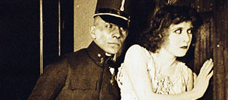
Blind Husbands
1919 -
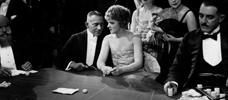
Foolish Wives
1922 -
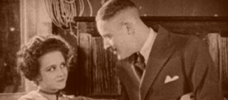
Merry-Go-Round
1923 -
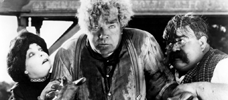
Greed
1924 -
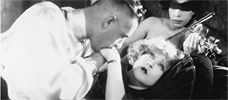
The Merry Widow
1925 -
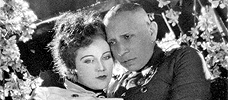
The Wedding March
1928 -
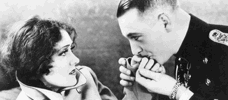
Queen Kelly
1929 -
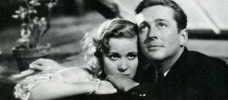
Hello, Sister!
1933
We don’t do comments anymore, but you may contact us here or find us on Twitter or Facebook.



